By DANIEL KITTREDGE It's a place referred to, almost universally, as a "beautiful space" and a "gem." There's also broad agreement that it faces a host of issues, none of which will be easy, or cheap, to resolve. For now, the future of Meshanticut State
This item is available in full to subscribers.
We have recently launched a new and improved website. To continue reading, you will need to either log into your subscriber account, or purchase a new subscription.
If you are a current print subscriber, you can set up a free website account by clicking here.
Otherwise, click here to view your options for subscribing.
Please log in to continue |
|
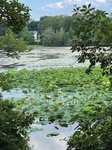
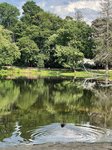
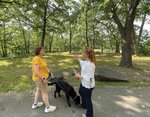
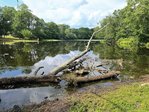
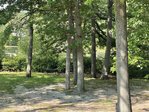

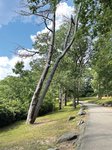
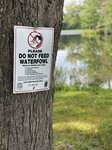

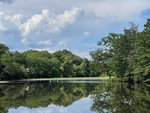
It’s a place referred to, almost universally, as a “beautiful space” and a “gem.”
There’s also broad agreement that it faces a host of issues, none of which will be easy, or cheap, to resolve.
For now, the future of Meshanticut State Park – donated to the Metropolitan Park Commission in 1910, the same year Cranston formally went from a town to a city – is unclear.
Recent talks between the city and state over the possibility of the park, long a destination for fishing and recreation, being transferred to Cranston’s ownership have produced little optimism over an agreement being reached in the near future.
But elected officials and Department of Environmental Management professionals all say despite the impasse, they remain committed to ensuring Meshanticut remains part of Cranston’s natural landscape in the years to come.
“It really is a hidden gem that the whole city can appreciate,” said Chris Paplauskas, president of the City Council and the representative for Ward 5, which includes the park.
“These small urban green spots … People enjoy them,” said Christine Dudley, deputy chief of freshwater fish for the Department of Environmental Management. “They have to be preserved.”
The most visible issue facing the park – both in terms of physical impact and recent public attention – has been the rapid spread of the sacred lotus on Meshanticut Pond.
The invasive vegetation, native to Asia and known scientifically as Nelumbo nucifera, was first documented in the pond in 2018, although DEM says it is believed to have been present for roughly five years.
The genesis of the infestation isn’t mysterious. Indeed, it was documented through a Facebook post, said Katie DeGoosh-DiMarzio, environmental analyst with DEM’s Office of Water Resources. The woman who introduced lotus seeds into the pond indicated on social media that she’d done so in memory of a loved one, citing the spiritual significance the lotus holds in Hinduism and Buddhism.
“She thought she was doing a lovely thing, but she didn’t realize she was putting an invasive into the pond,” DeGoosh-DiMarzio said.
Dudley added: “It’s a lesson … Nobody should take it into their realm to plant things, to stock things, to do anything like that. There are experts, there are biologists that know better.”
The lotus is extremely disruptive to the ecosystem of the pond. The impact, DeGoosh-DiMarzio said, comes in three ways – reduction of plant biodiversity, diminishing of water quality, and degradation of habitat for fish and other wildlife.
“Because one large leaf can grow to be over 2 feet across, floating on the water’s surface, it blocks the sun from reaching smaller native plants growing below,” she said. “And large invasive plants will consume nutrients at a faster rate, generally grow faster than native plants, and take up more space, thus aggressively out-competing native plants, reducing their numbers and therefore reducing biodiversity.”
Then, as the lotus plants begin to die in the fall, the resulting large volume of decaying matter uses up oxygen in the pond. That, in turn, can result in fish kills, DeGoosh-DiMarzio said.
“New invasive plants physically alter the habitat structure as they overtake native plants, rearranging how fish, frogs, turtles, muskrats or other wildlife may use the plants for shelter to hide from prey, foraging for food, or altering/displacing their preferred food source,” she added. “Waterfowl may avoid an area covered with plants if they are accustomed to landing in open water, or if they prefer hunting prey in clear water they can see through from the skies.”
There are other negative effects, too, when it comes to the recreational use of the pond.
“Invasive plants also cause other problems, such as ruining recreational opportunities – snagging fishing lines, impeding canoe or kayak paddling, tangling around motor boat propellers, spoiling scenic water views, or making swimming unpleasant,” DeGoosh-DiMarzio said.
A volunteer effort in 2019 to combat the spread of the lotus by cutting the plants beneath the waterline proved successful in limiting its spread, DeGoosh-DiMarzio said.
“All the folks that came out for that event should know that they were very helpful in controlling that patch,” she added.
But the resilient and fast-spreading plant has nonetheless continued to grow. While the main patch culled by volunteers has remained somewhat consistent in size since 2019, two other patches have appeared since – and expanded rapidly.
An August field report from DEM’s Office of Water Resources indicates that between the three patches, lotus currently covers approximately 2.32 acres of the 12-acre pond. The report indicates the main patch actually decreased, from 1.66 acres to roughly an eighth of an acre, between 2019 and 2020 thanks to the volunteer effort. That patch had grown back to 1.18 acres, however, as of this summer.
The other two patches, which appeared after the volunteer effort, show more clearly what officials and community members are facing. The second patch, on the Cranston Street side of the pond and park, has grown roughly half an acre each year – from roughly a tenth of an acre in 2019 to half an acre in 2020 and just less than one acre in 2021 – despite herbicide treatment in 2020. The third patch, toward the southwest corner of the pond, has grown at a similar rate (.05 acre in 2019, .1 acre in 2020, .17 acre in 2021).
Meshanticut Pond remains the only public body of water in Rhode Island in which the sacred lotus has been documented, DeGoosh-DiMarzio said. It has also been found at a public lake in Massachusetts. The plant is more common in private ponds and waterways.
The sacred lotus is far from the only issue facing Meshanticut Pond and the park surrounding it.
Other species of invasive vegetation are present, including variable water milfoil, algae and fanwort. DEM’s August field report notes that spiny naiad has also been detected in the pond for the first time. A number of trees in the park are dead or unhealthy, and many fallen branches dot the park and water line.
Then there are concerns over the condition of the park’s infrastructure, particularly when it comes to the state-owned roads and the walking loop around the pond.
Years of wear and erosion have washed away or cracked pavement throughout the park. Parking and access can also be problematic, with damaged steps or walkways at the major entry points, including from Cranston High School West.
During a summer walk around the pond with the Herald, state Rep. Barbara Ann Fenton-Fung of District 15 highlighted a number of the issues with the park’s condition.
She spoke of how limiting – and, in some cases, unsafe – the current state of the park is for visitors with physical disabilities. Using examples like a family fishing from the pond’s shores, or parents teaching a child how to ride a bike along the loop, she also highlighted how erosion and neglect have created potentially serious hazards for all members of the community who seek to utilize the park.
At one point during the walk, Fenton-Fung stopped to chat with nearby resident Gail Bennett, who was out walking her dog.
“I grew up around the lake and I bought my parents’ house, and this year is the worst that it’s been,” Bennett said regarding erosion at the park. She also referenced the continued spread of the lotus infestation.
Fenton-Fung spoke of hopes that officials on the city and state levels could, collectively, develop a “priority punch list” for the park’s needs and work to secure the needed resources to address them.
“This is a gem right here. We shouldn’t be throwing this away,” she said.
Michael Healey, DEM’s chief public affairs officer, confirmed what local elected leaders say they’ve been told by the state – that limited resources and staffing have created a challenge for the agency at Meshanticut and other facilities.
“We need more people power. There is no way around it,” he said. “We have been working over the past few sessions of the General Assembly to increase staff and, fortunately, legislative leaders have been receptive because they understand that our current staffing level tests our ability to help Rhode Islanders and fulfill mission-critical priorities aimed at protecting and managing Rhode Island’s environment and natural resources. We are very grateful for the support from the General Assembly and are looking forward to working with Gov. McKee to push for more resources in the next session of the legislature.”
To some local officials and residents, there’s an obvious path forward in terms of ensuring the park’s upkeep – having the city take ownership of the site.
That possibility has been the focus of new discussions between the state and the administration of Mayor Ken Hopkins since earlier this year.
During an interview late last month with the Herald, Hopkins said a recent meeting on the issue included representatives from DEM, the Department of Transportation, the governor’s office, City Council and General Assembly.
He said he shares a viewpoint expressed by Fenton-Fung, Paplauskas and others in conversations with the paper – that before the city would agree to take on ownership of the park, the state would need to undertake significant investments in improving its infrastructure. That has been conveyed to the state, he said, along with an outline of the work the city would want to see completed.
“There’s been back-and-forth bantering about us taking it back … I’d love to do it, but not under the conditions right now,” the mayor said.
“The state’s problem is, they don’t have the manpower,” he added. “We’ve had the discussions … The cards are on the table. It’s just a matter of who wants to pick them up.”
Healey largely echoed that assessment of the situation while discussing how the recent ownership talks emerged and progressed.
“The discussion started from a meeting we had with then-incoming Mayor Hopkins and developed over the following weeks,” he said. “Originally, we were interested in a full, free transfer of Meshanticut to the city, as is. As currently staffed and budgeted, DEM does not have the resources to give Meshanticut the attention it needs. But there are two sides to every real estate transaction and the city asked for substantial work to be done before they’d consider a transfer. We were prepared to continue managing the sacred lotus and other invasive plants in the pond and we would continue to stock it with trout. The city asked for substantial infrastructure work around the pond that we cannot afford to undertake. So, at least for now, given each side’s needs and limitations, a transfer does not appear likely.”
Healey said no formal study has been done to this point on the capital investment that would be required at Meshanticut, although he noted that a state Division of Capital Asset Management and Maintenance study completed in recent years estimated nearly $50 million in capital repairs would be needed across all of the state’s parks and beaches over a decade.
He added, however, that based on the work the city requested as part of the ownership talks – including “items such as repairing roads, erosion control, tree work, repairing and installing benches” – DEM estimated the needed investment at the park would total between $2 million and $2.5 million.
Paplauskas, who represents the Meshanticut area and has made the park a priority since his first term on the council, said he favors city ownership of the park. He noted the amount of trash that volunteers and Scouts have pulled from the property during cleanups he’s helped organize – and said he had to push for the city to place a trash can in the Cranston West parking lot after the state declined to place one within the park itself.
“I would love to see the city take over the property. I think in the end, we could dedicate more time and resources to it and really show what a gem it is,” he said.
He acknowledged, however, that the existing issues represent a significant obstacle.
“It’s like buying a house,” he said. “You wouldn’t want to buy a house with all these problems.”
Paplauskas also said his “No. 1 concern” is the lotus, and finding a “permanent solution” to that issue.
“It’s really growing fast,” he said.
State Rep. Brandon Potter, whose District 16 includes the park, took part in the recent meeting among state and local officials. One of his primary concerns is the “incredible amount of red tape” that surrounds efforts to improve the park. He said he recently secured a legislative grant for the nonprofit organization Cranston Cares to upgrade benches at the park – only to find the work could not proceed due to existing Americans with Disabilities Act compliance issues at the property.
Potter also said while he understands the position of Hopkins and other city officials regarding the need for state investment before city ownership is considered, he hopes additional discussions might still lead to a solution. He floated the possibility of the city utilizing some of its American Rescue Plan funding to help provide for some of the needed repairs.
“I think it’s a beautiful space and it’s a great opportunity to have it revitalized if all the parties involved are flexible,” he said.
Fenton-Fung, in an email to the Herald last week, said ADA compliance and access at the park continue to be among her top priorities.
“From day one, I have been very vocal that the restoration of Meshanticut absolutely must include ADA adherent pathways, so that our residents with mobility impairments, including those who utilize wheelchairs, can safely and readily access all areas of this park,” she said. “Considering the amount of repair that must be done due to erosion, it is the perfect time for us to take a look at some of these uneven passageways and redesign them so that everyone can safely enjoy this diamond in the rough.”
Beyond the ownership talks, the issue of the sacred lotus remains. And state officials say it’s not going anywhere, at least not soon.
The pond recently received a new round of herbicide treatment in an effort to stem the growth of the lotus and the other invasive vegetation. Solitude Lakes Management LLC was contracted by DEM for the work, with the nearly $6,700 price tag covered through a federal grant.
“The weed control treatment is specifically targeted for the weeds that infest the pond and do not harm fish or other aquatic species,” reads a statement from DEM about the treatment, which began Sept. 28.
It appears clear, however, that some other approach beyond cutting and treating the plants will be needed. The August field report from DEM notes that the two smaller patches have grown despite prior herbicide treatment. When it comes to the larger patch, the report notes: “It is unclear whether cutting alone or the combination of cutting plus herbicides the following year contributed to the decline of the large patch. Cutting vegetation may have made the plants in the larger patch more susceptible to the herbicide treatment. Additional monitoring will be needed to gauge the effectiveness of the management moving forward.”
What else can be done? Dudley and DeGoosh-DiMarzio both said draining the pond and rooting out the lotus – otherwise known as dredging, an extreme possibility that has been mentioned – would be an unwise and unfeasible approach.
“As a pond is drained for dredging, water is generally released downstream, and although fish can move with the water, some may be unnecessarily sacrificed as water is removed,” DeGoosh-DiMarzio said. “Frogs, turtles, mussels, aquatic insects and other wildlife that rely on the water also lose their habitat or could be lost themselves, causing undue damage and significant alterations to the ecosystem. Dredging will also destroy any native plant species, and it may be extra problematic post-refilling as barren soils are especially vulnerable to aggressive invasive plants that are extremely successful pioneer species – all indicators that dredging a lake is not a viable option.”
Dudley said drawdowns – reducing a pond or lake’s water level by a couple of feet in order to get greater access to invasive plants – is a strategy utilized in some situations. She left open the possibility of finding a way to root out the lotus without draining the pond, although that remains theoretical.
In terms of Meshanticut, she said she would recommend additional herbicide treatment in the spring. In the meantime, officials will need to continue explore new ways of combating the lotus.
“I think that we should hit it again in the spring, and then we should investigate some other way of getting it out,” she said, adding: “You just have to keep at it until you kill them.”
There is always the possibility, Dudley added, that some new treatment or approach is developed in the marketplace. She spoke highly of Solitude Lakes Management.
“Who knows?” she said. “Somebody might come up with something that works better.”
While the lotus is, to this point, an issue unique to Meshanticut Pond in Rhode Island, other weeds and invasive plants are increasingly widespread at the state’s public bodies of water.
As Dudley puts it: “The weed problem is everywhere.”
The cause? A variety of factors, Dudley said. In some cases, shoreline cottages have become full-time homes, leading to more lawn maintenance and, often, more chemical treatments. Other factors – from overburdened septic systems to people introducing ornamental fish, or even dumping out aquariums, into bodies of water – have also played a role.
“The use around [lakes and ponds] has changed … We just wish that people would understand and police themselves,” she said.
Preventing future infestations of lotus and other invasives before they occur is among DEM’s priorities. DeGoosh-DiMarzio noted that lotus seeds can currently be purchased at garden centers. She said the agency has drafted regulations to prohibit the sale of the seeds in Rhode Island, and those rules are on track to take effect this year.
Whatever approach is taken at Meshanticut Pond going forward, Dudley views preserving places like it as a vital mission. Having access to green spaces in more urban settings, she said, is especially valuable for those Rhode Islanders who might not have ready access to transportation to other parts of the state, like South County.
“This should be in neighborhood areas, and I really believe in that,” she said. “It makes a person’s life better.”
Closer to home, Dudley said she and her colleagues also want to see Meshanticut preserved as recreational resource for the neighborhood and broader community. She spoke fondly of fishing programs DEM has conducted at the pond in collaboration with Cranston West, citing that as another example of the pond’s value.
“We’re public servants. We want to keep these water bodies enjoyable for the public … We’re not going to give up on it,” she said.
Comments
No comments on this item Please log in to comment by clicking here